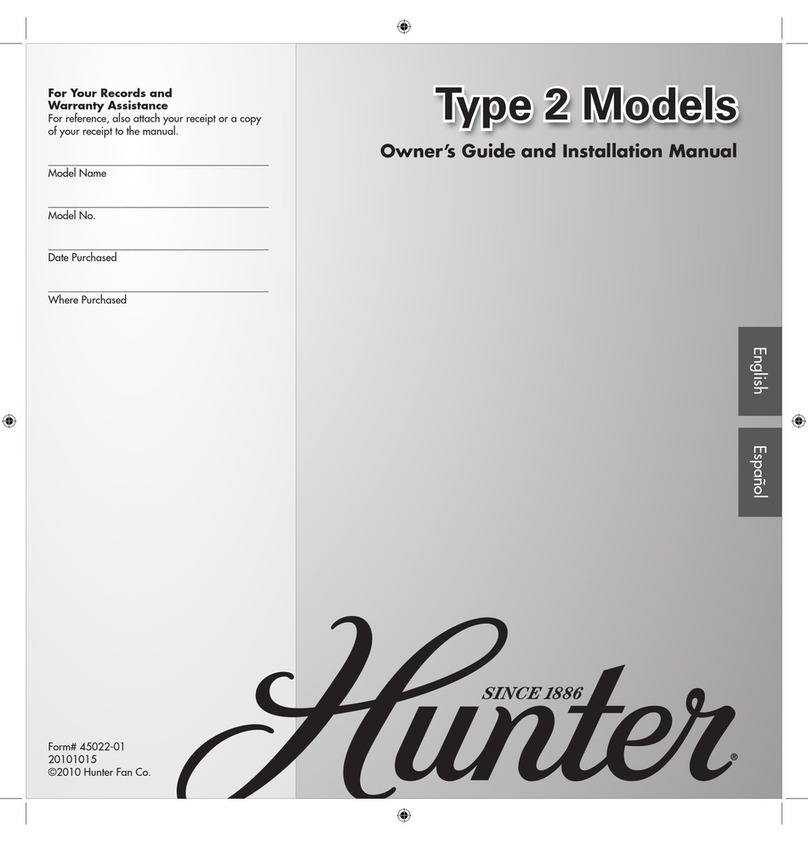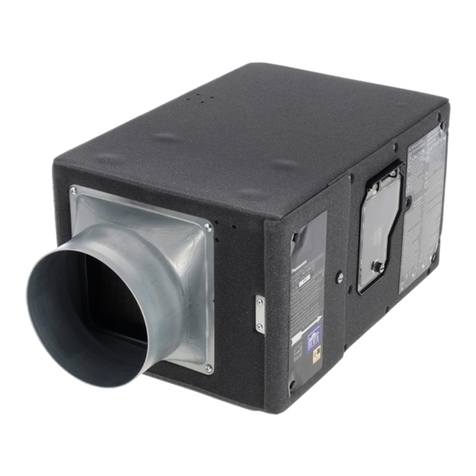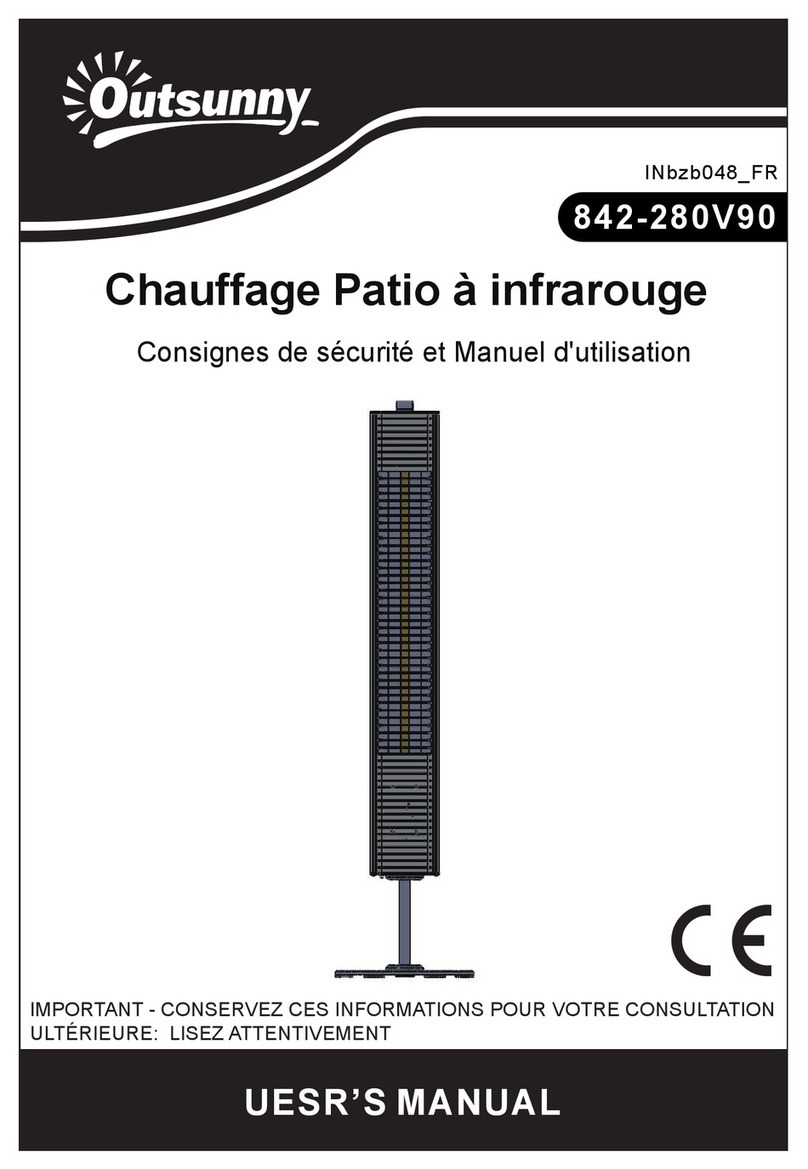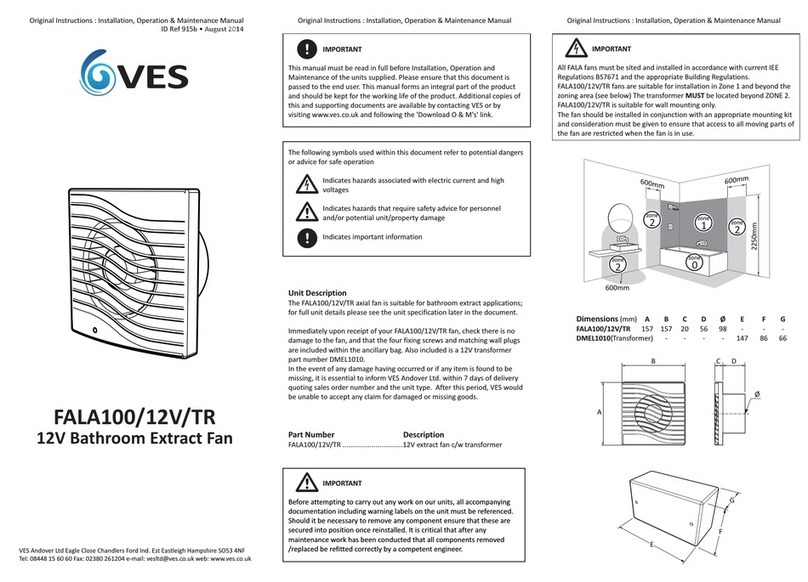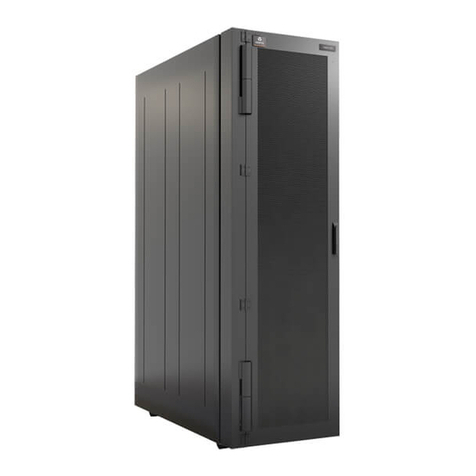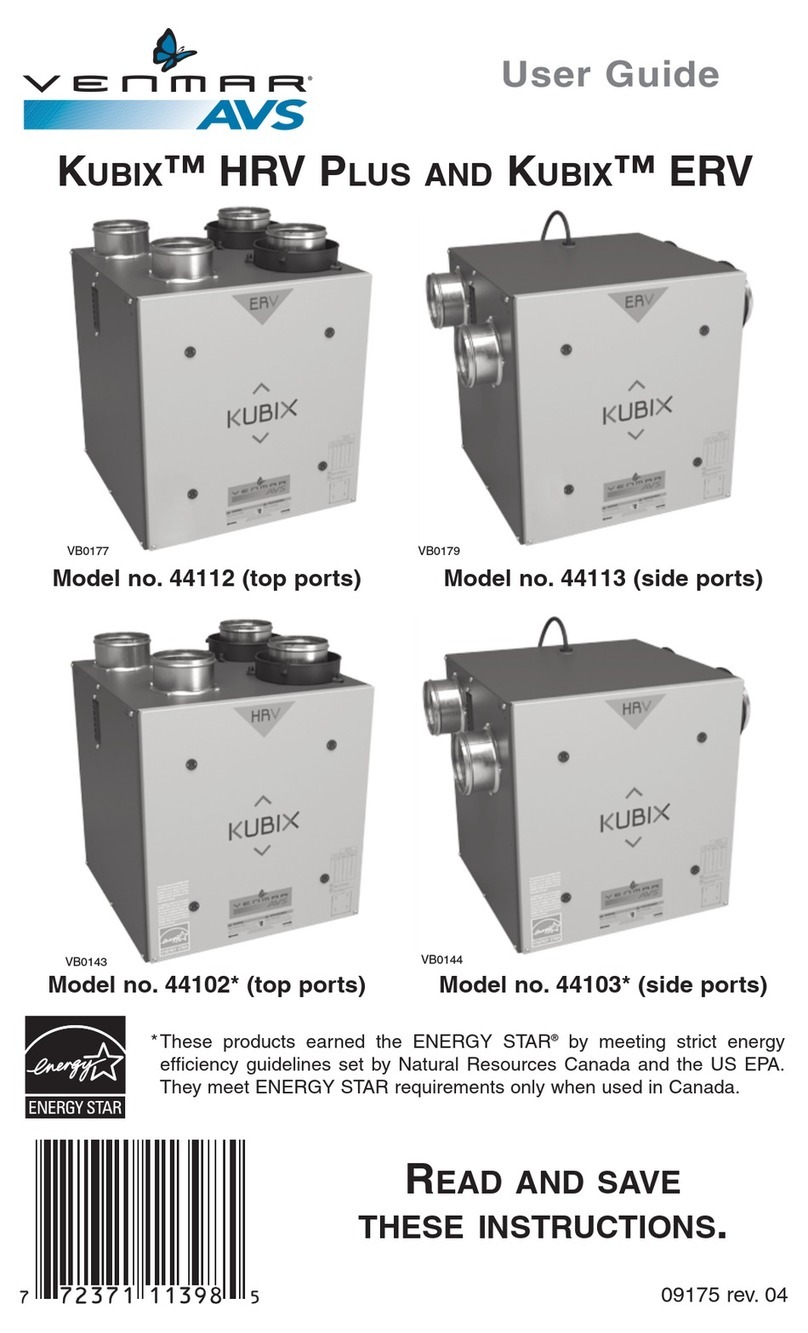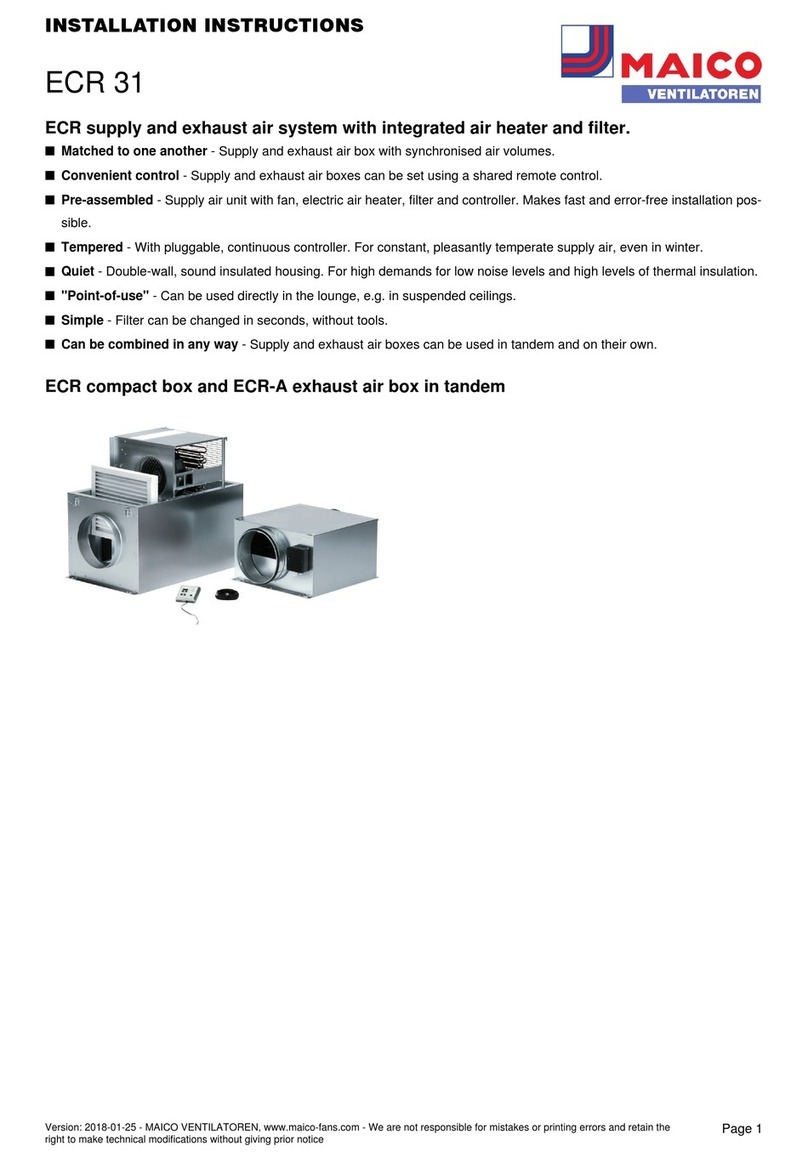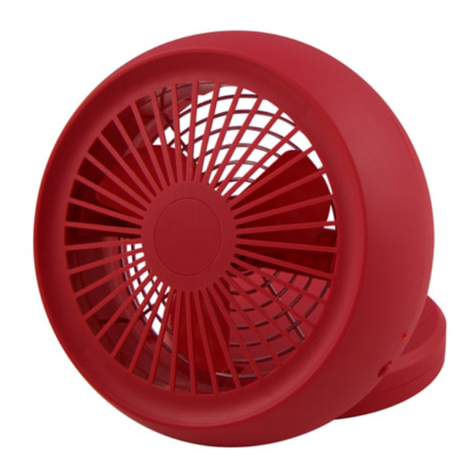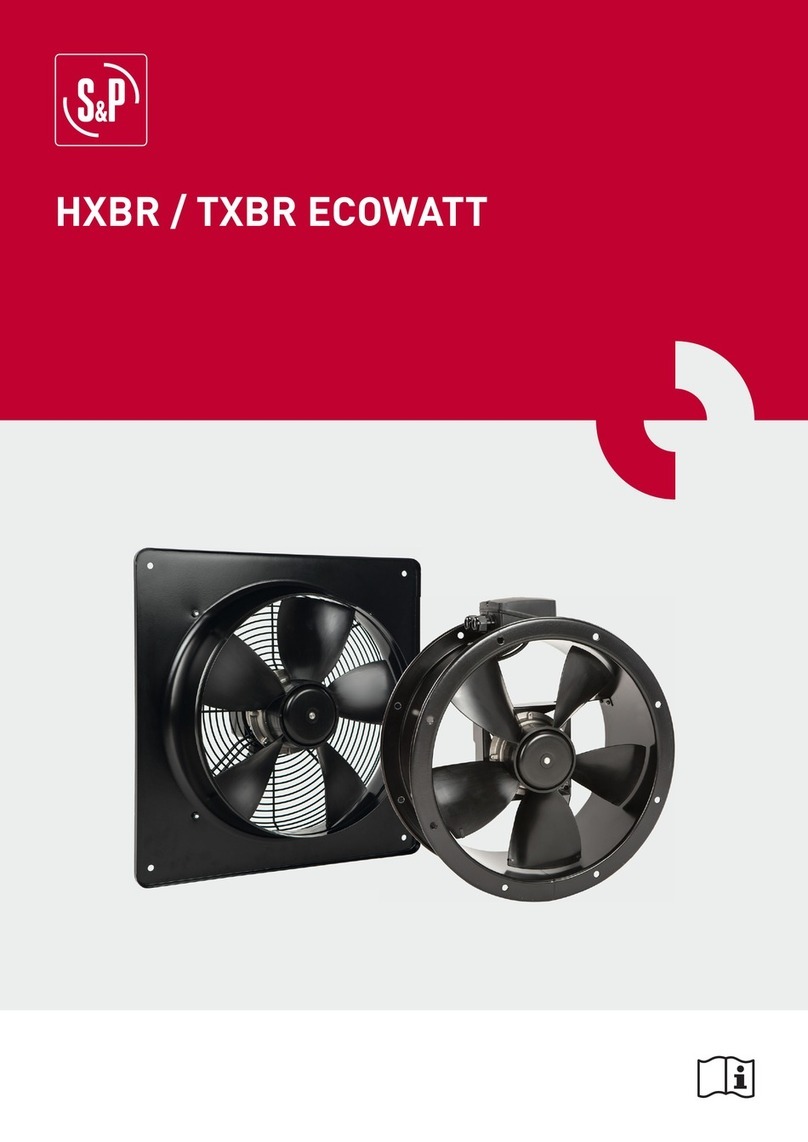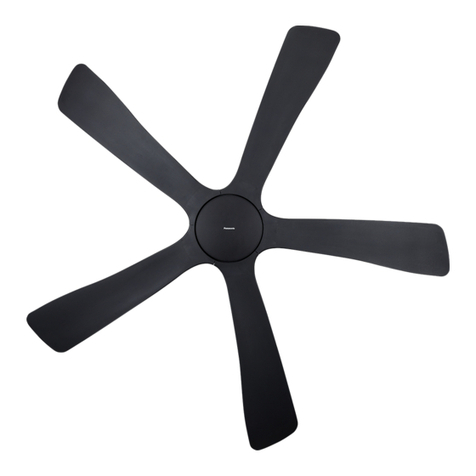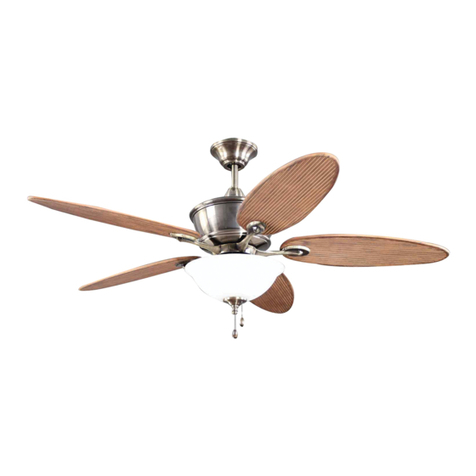
Care and Cleaning
Troubleshooting
Problem Solution
The fan will not
start.
Check the main and branch circuit fuses or breakers.
Check the line wire connections to the fan and switch wire connections in the switch
housing.
The fan is noisy.
Ensure all motor housing screws are snug.
Ensure the screws that attach the blade bracket to the motor hub are tight.
Ensure the wire nut connections are not rattling against each other or the interior wall of
the switch housing.
Allow a 24-hour “breaking in” period. Most noises associated with a new fan disappear
during this time.
If you are using the Ceiling Fan light kit, ensure the screws securing the glassware are
tight. Check that the light bulbs are also secure.
Ensure the canopy is a short distance from the ceiling. It should not touch the ceiling.
Ensure your outlet box is secure and rubber isolator pads were used between the
mounting plate and outlet box.
The fan wobbles.
Check that all blade and blade arm screws are secure.
Most fan wobble problems are caused when blade levels are unequal. Check this level
by selecting a point on the ceiling above the tip of one of the blades. Measure from a point on
the center of the blade to the point on the ceiling. Rotate the fan until the next blade is
positioned for measurement, and measure from the same point on each blade to the ceiling.
Repeat for each blade. Any measurement deviation should be within 1/8 in. Run the fan for
ten minutes. If the minutes. If the fan continues to wobble please contact Customer Service
and a balancing kit will be sent to you at no charge.
WARNING: Make sure the power is off
before cleaning your fan.
Because of the fan’s natural movement, some connections may become loose. Check the support connections,
brackets, and blade attachments twice a year. Make sure they are secure. It is not necessary to remove the fan from
the ceiling.
Clean your fan periodically to help maintain its new appearance over the years. Do not use water when cleaning,
as this could damage the motor, or the wood, or possibly cause an electrical shock. Use only a soft brush or Iint-free
cloth to avoid scratching the finish. The plating is sealed with a lacquer to minimize discoloration or tarnishing.
You can apply a light coat of furniture polish to the wood for additional protection and enhanced beauty. Cover
small scratches with a light application of shoe polish.
You do not need to oil your fan. The motor has permanently-lubricated sealed ball bearings.
8

